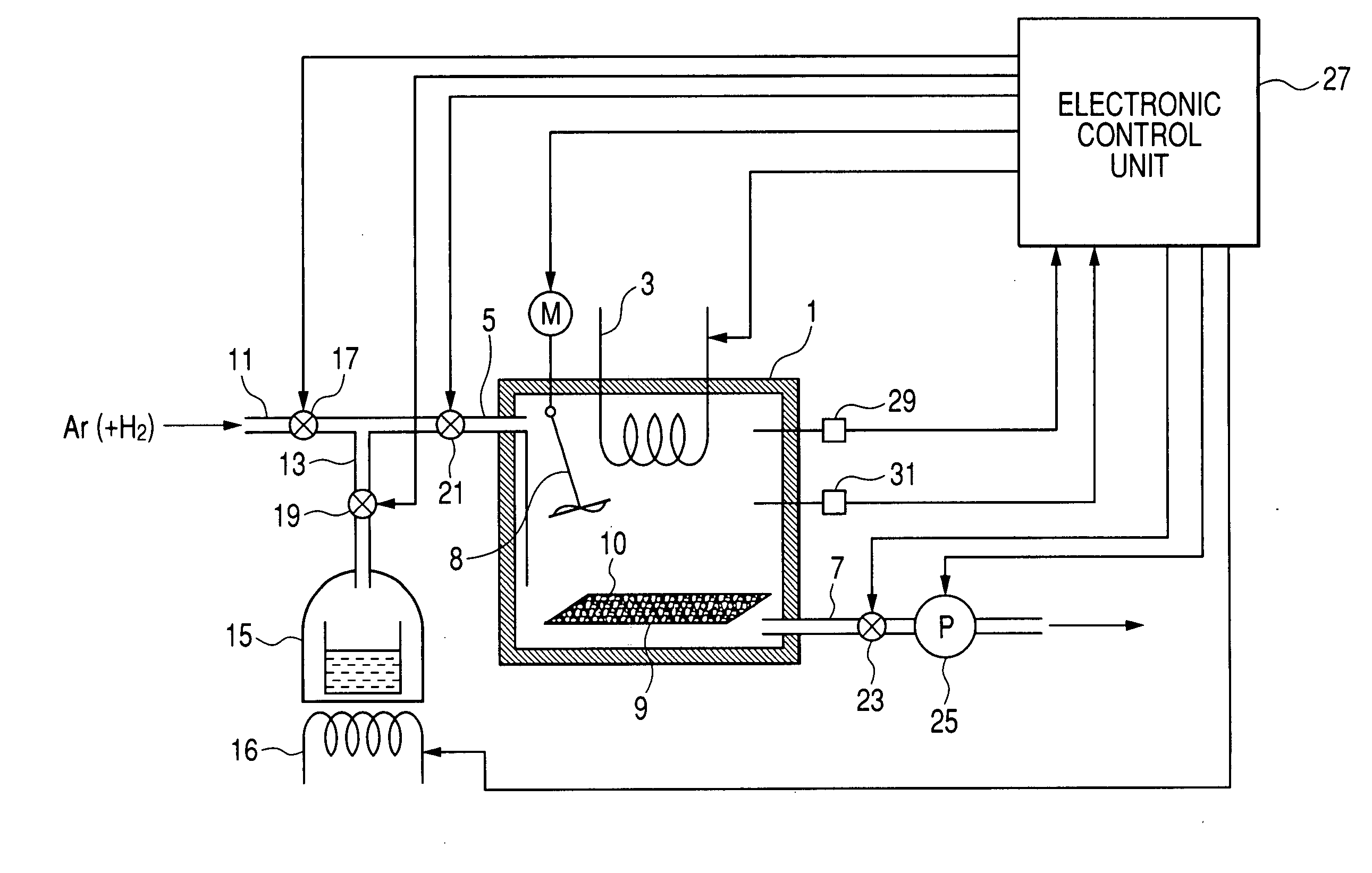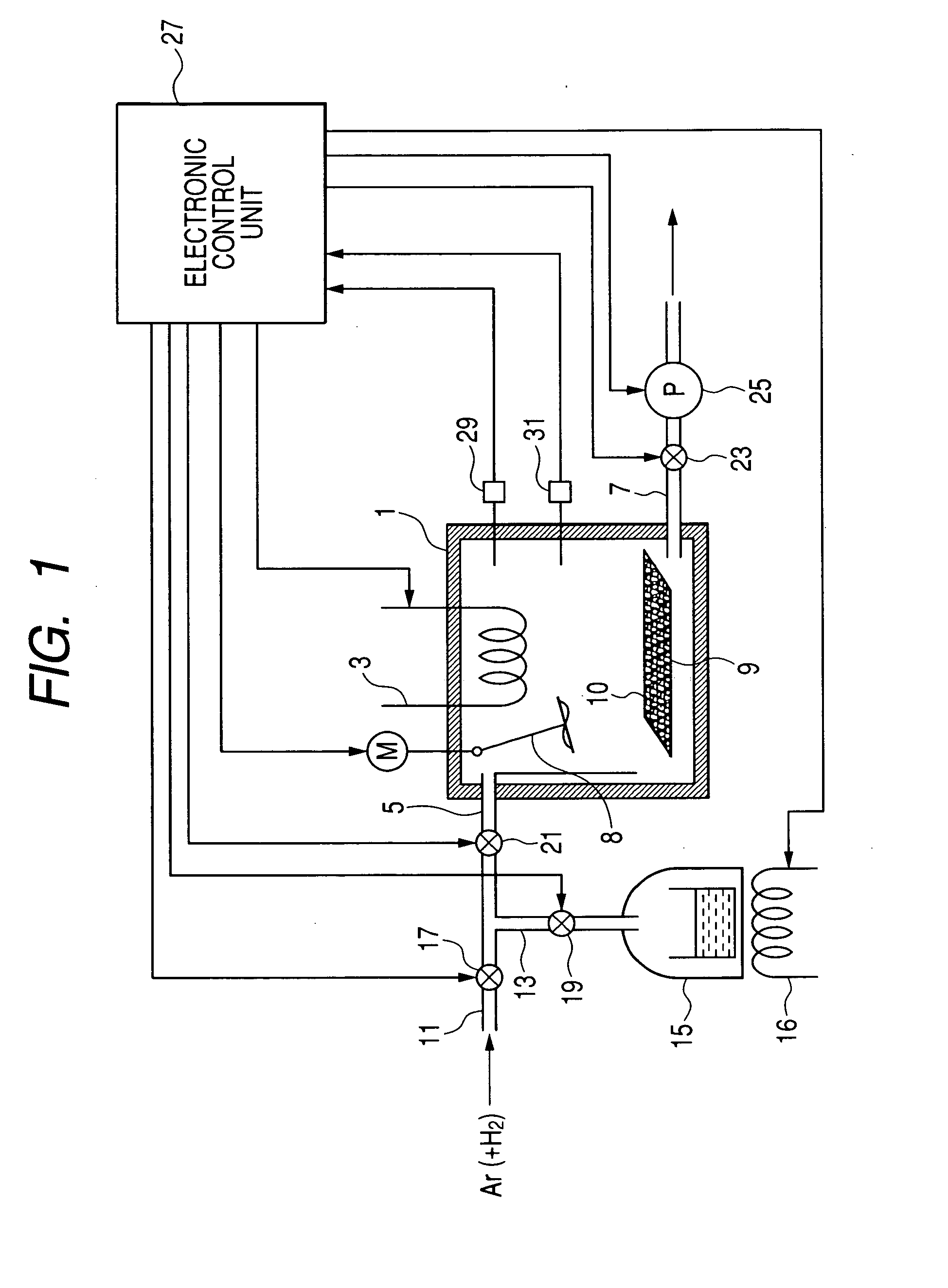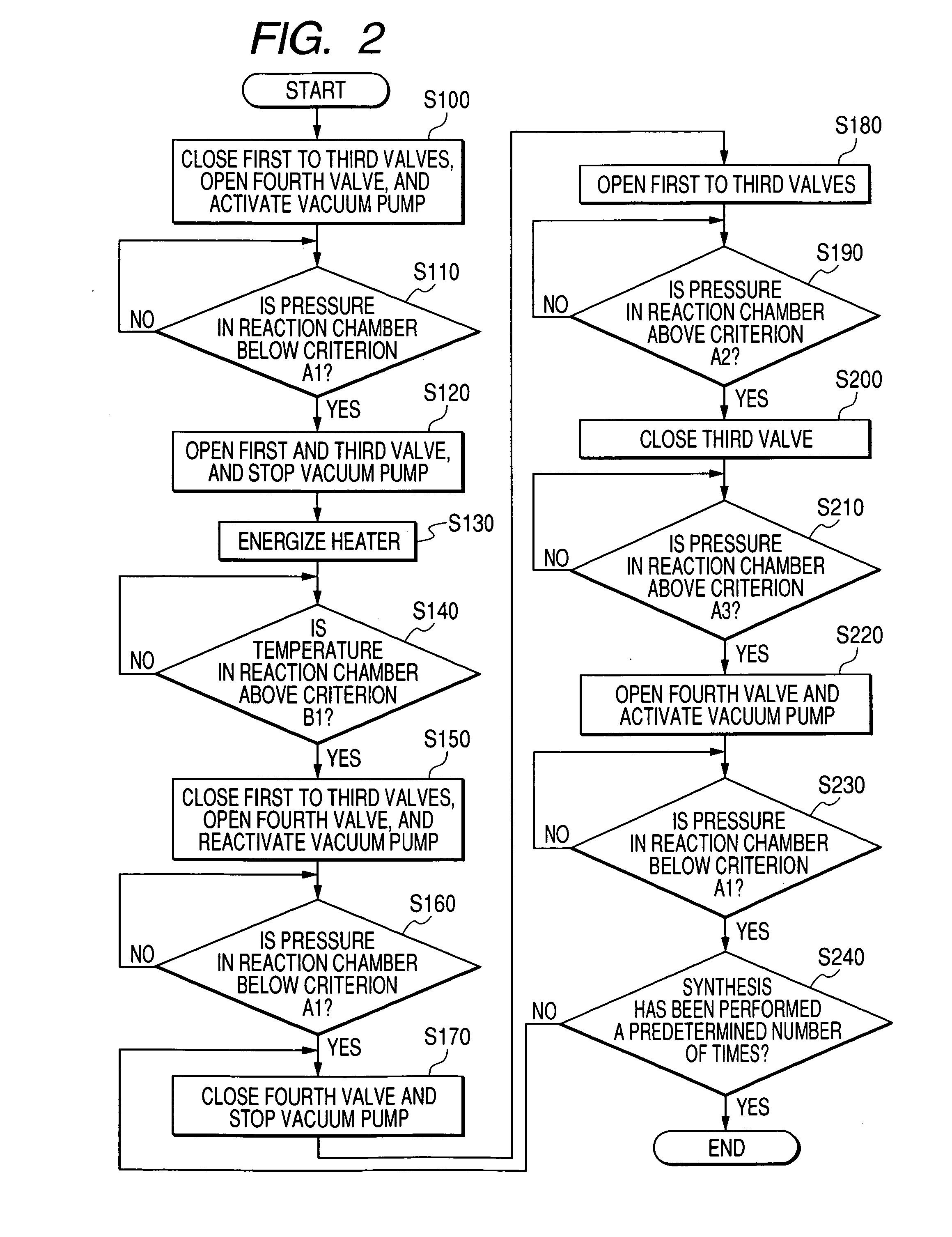Method and apparatus for manufacturing carbon nanotube
a carbon nanotube and manufacturing method technology, applied in the field of carbon nanotube manufacturing, can solve the problems of increasing the manufacturing cost of carbon nanotubes, reducing the efficiency of raw material use, and most carbons being exhausted
- Summary
- Abstract
- Description
- Claims
- Application Information
AI Technical Summary
Benefits of technology
Problems solved by technology
Method used
Image
Examples
embodiment 1
[0039]FIG. 1 shows in block diagram a carbon nanotube manufacturing apparatus according to a first embodiment (Embodiment 1) of the present invention. As shown in this figure, the manufacturing apparatus comprises a reaction chamber 1 in which a vertically aligned carbon nanotube is manufactured by using a chemical vapor deposition (CVD) method, a heater 3 for heating the interior of the reaction chamber 1, a supply path (pipe) 5 for supplying a raw material gas serving as a carbon source into the reaction chamber 1, and an exhaust path (pipe) 7 for exhausting gases including a reaction byproduct gas from the reaction chamber 1. A substrate 9 having a catalyst 10 carried thereon is placed in the reaction chamber 1. The substrate 9 is preferably made of quartz, and the catalyst 10 is preferably a CoMo catalyst. The catalyst 10 is fixed to a surface of the substrate 9. An electric fan 8 is disposed in the reaction chamber 1 for stirring a gaseous atmosphere in the reaction chamber 1.
[...
embodiment 2
[0077]A second embodiment (Embodiment 2) of the present invention will be described below with reference to FIG. 3. These parts which are similar to those described above with respect to the first embodiment (Embodiment 1) will not be described to avoid unnecessary duplication.
[0078]In Embodiment 2 a carbon nanotube manufacturing apparatus employs an annular furnace, such as used in the conventional apparatus shown in FIG. 4.
[0079]More specifically, as shown in FIG. 3, the carbon nanotube manufacturing apparatus comprises a tubular reaction chamber 32, a heater (annular furnace) 33, a supply path (pipe) 35, and an exhaust path (pipe) 37. A substrate 39 having a catalyst 40 carried thereon is placed in the tubular reaction chamber 32.
[0080]Connected to the supply pipe 35 are a first supply pipe 41 for supplying Ar as a carrier gas to the reaction chamber 32 via the supply pipe 35, and a second supply pipe 43 for supplying ethanol as a carbon source to the reaction chamber 32 via the ...
embodiment 3
[0086]Next, description will be made of a third embodiment (Embodiment 3) of the present invention. These parts which are similar to those described above with respect to the first and second embodiments (Embodiments 1 and 2) will be omitted from the description to avoid unnecessary duplication.
[0087]In each of Embodiments 1 and 2, the pressure sensor 31 or 59 for detecting the pressure in the reaction chamber 1 or 32 is used as a detecting means for detecting a condition in which the synthesis of carbon nanotubes has proceeded to a predetermined level. In Embodiment 3, however, the detecting means consists of a gas sensor, which is capable of monitoring a gaseous component in the reaction chamber 1 or 32 so as to determine whether the synthesis of carbon nanotubes has proceeded to the predetermined level.
[0088]More specifically, with the progress of a carbon nanotube synthesis operation, the concentration of a reaction byproduct (for example, CO2) increases. Accordingly, by monitor...
PUM
| Property | Measurement | Unit |
|---|---|---|
| Temperature | aaaaa | aaaaa |
| Time | aaaaa | aaaaa |
| Thickness | aaaaa | aaaaa |
Abstract
Description
Claims
Application Information
 Login to View More
Login to View More - R&D
- Intellectual Property
- Life Sciences
- Materials
- Tech Scout
- Unparalleled Data Quality
- Higher Quality Content
- 60% Fewer Hallucinations
Browse by: Latest US Patents, China's latest patents, Technical Efficacy Thesaurus, Application Domain, Technology Topic, Popular Technical Reports.
© 2025 PatSnap. All rights reserved.Legal|Privacy policy|Modern Slavery Act Transparency Statement|Sitemap|About US| Contact US: help@patsnap.com



